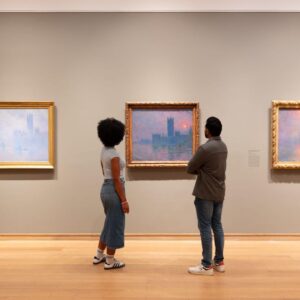
Richard Hamilton, the most influential British artist of the 20th century, has died aged 89.
In his long, productive life he created the most important and enduring works of any British modern painter.
This may sound a surprising claim. We have our national icons and our pop celebrities. But neither Francis Bacon nor Lucian Freud nor Damien Hirst has shaped modern art as Hamilton did when he put a lolly with the word POP on it in the hand of a muscleman in his 1956 collage, Just What is it that Makes Today’s Homes So Different, So Appealing?

Hamilton has a serious claim to be the inventor of pop art: this collage is a visionary, yet ironic, manifesto for a new art that would be at home in the modern world. For him, in a postwar Britain of austerity measures, pop was a utopian ideal. Big, fast cars were the metal angels of a smooth, beautiful future.
I have been driven by Hamilton in his huge, sleek car. The experience was like stepping into one of his paintings. He drove me to his house, a modern dream home decorated with the works of Marcel Duchamp – or rather, Hamilton’s own replicas personally approved by the maverick dadaist chess player.
Hamilton’s second great influence on the art of today was his championing of Duchamp at a time when the Frenchman’s subversive philosophical art was largely forgotten. One of Hamilton’s masterpieces is his replica of Duchamp’s Large Glass, in Tate Modern.
was an intellectual. He did not go for the guts, but the brain. His art is thoughtful, uneasy, even as it celebrates the power of technology. It also became increasingly political. He confronted issues from the Irish Troubles to both Iraq wars in works that dropped the cool mask for outright engagement, making him even more of a meaty and serious proposition.
Swingeing London, pictured above, in which Mick Jagger in lurid green jacket is enclosed in the back of a police car, shielding his face against the media glare, is a great modern history painting. So is Hamilton’s portrait of IRA hunger striker Bobby Sands. These works analyse the way images are made, yet their intellect is saturated with outrage and compassion.
Hamilton saw our future coming. He even designed a computer as a readymade artwork in the early days of digital. He saw and accepted the way technology changes the human condition. Yet he cared about, and fought for, the human ghost in the machine. That is what makes him a great artist.
Hockney tribute
Dear Richard, a very fascinating man and artist in my life. He was always part of another art world from the Royal College of Art. He was of course a great friend of Duchamp and a very early promoter of him in England. He was a great stalwart of the old ICA when it was in Dover Street and had a purpose. He would do interviews with young artists and always encouraged them: he introduced Joseph Beuys and Dieter Roth – then “little-known continental artists” – mostly at the ICA but also at his very modern house in north London. He always had very interesting guests. He also seemed to love ambiguity. Once at an ICA discussion, Duchamp was asked for an opinion … I’ve even forgotten the subject, but he stood up and we thought he said “Beware … French painting”, a loaded phrase at the time, perhaps an attack on belle peinture. It was Richard who eventually found out that what he had really said was “Beware – fresh paint”. All interpretations were interesting to Richard. He taught me a lot, as he did a lot of other artists. David Hockney
guardian.co.uk © Guardian News & Media Limited 2010
Published via the Guardian News Feed plugin for WordPress.







